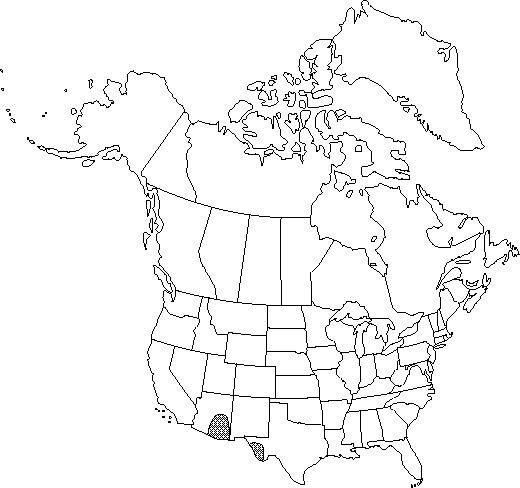Ranunculus fasciculatus
Fl. Mexic. ed. 2, 134. 1894.
Stems erect or decumbent, not rooting nodally, hirsute to nearly glabrous, base not bulbous. Roots fleshy and somewhat tuberous. Basal leaf-blades ovate to deltate in outline, 3 (-5) -foliolate, 2.5-14.9 × 2.3-19.9 cm, leaflets 1-2×-lobed or parted, ultimate segments narrowly oblong to elliptic or lanceolate, margins toothed, apex narrowly acute to rounded-acute. Flowers: receptacle hispid; sepals reflexed 1-2 mm above base, 5-10 × 3-5 mm, hispid; petals 11-16, yellow, 8-21 × 2-5 mm. Heads of achenes globose to ovoid, 6-13 × 7-9 mm; achenes 2.4-3.4 × 2-2.4 mm, glabrous, margin forming rib or narrow wing 0.1-0.4 mm wide; beak filiform from deltate base, straight, 1.8-2.5 mm, filiform tip often deciduous, leaving 1-1.2 mm deltate beak.
Phenology: Flowering late spring–summer (Jun–Aug).
Habitat: Stream banks, lakeshores, and marshes
Elevation: 1000-2200 m
Distribution

Ariz., Tex., Mexico
Discussion
I am following G. L. Nesom (1993) in treating Ranunculus fasciculatus as a distinct species. This taxon was considered a variety of R. macranthus by L. D. Benson (1948) and a variety of R. petiolaris by T. Duncan (1980). These disparate opinions result from different interpretations of Mexican members of the R. petiolaris group.
Selected References
None.
Lower Taxa
"high" is not a number.